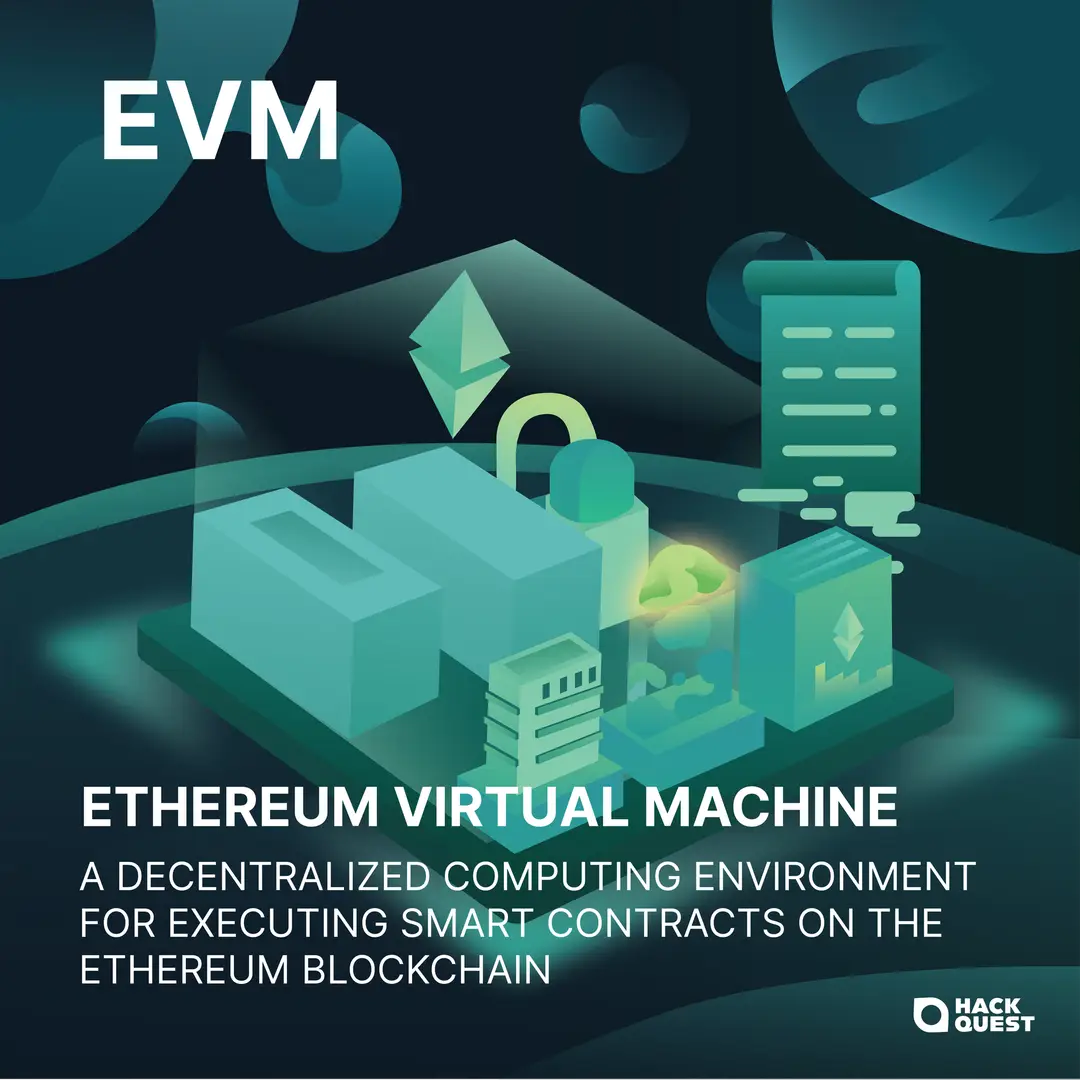Back
EVM (Ethereum Virtual Machine)
Dev
By HackQuest
Mar 27,20241 min readWelcome to the world of Web3, where cryptocurrencies, blockchain, and a unique culture converge. Entering the world of Web3 can be both thrilling and overwhelming, especially when faced with the seemingly cryptic language used by enthusiasts. Don't worry if you feel they sound like some secret codes, we are here to unravel their meaning in Web3 context. In this article, we are going to introduce [EVM].

What Does 'EVM' Mean?
The Ethereum Virtual Machine (EVM) is the runtime environment for smart contracts on the Ethereum blockchain. It's a virtual state machine that enables the execution of code exactly as intended; it's the layer of the Ethereum protocol that handles internal state and computation.
The Origin of EVM
Ethereum was proposed in late 2013 by Vitalik Buterin, with the network going live in 2015. The creation of the EVM was central to Ethereum's vision to build a decentralized platform that could execute smart contracts and support decentralized applications (DApps). Unlike Bitcoin, which was designed primarily as a digital currency, Ethereum's goal was to create a programmable blockchain that could perform a wide range of computational tasks.
How Does the EVM Work?
Mechanism: The EVM operates as a global, decentralized computer comprising thousands of individual nodes (computers) that run the Ethereum software. When a smart contract is deployed to the Ethereum blockchain, it's compiled into bytecode — the low-level, machine-readable language that the EVM can interpret and execute.
Smart contracts written in high-level languages like Solidity are translated into bytecode, which the EVM can then process. Each operation in the EVM, from arithmetic calculations to more complex instructions, requires a certain amount of gas, which is Ethereum's unit for measuring the computational effort needed to execute operations.
Key Features:
●Isolation: The EVM is completely isolated from the network, filesystem, and other processes of the host computer. This ensures that code runs securely and predictably.
●Smart Contracts: These are self-executing contracts with the terms of the agreement directly written into code. They run on the EVM and automatically enforce and execute the terms of a contract when predetermined conditions are met.
●Gas System: Every operation in the EVM consumes gas, with more complex operations requiring more gas. This system prevents spam on the network and allocates resources efficiently.
Why is the EVM Important?
Interoperability
The EVM provides a standardized environment for running any program on the Ethereum blockchain, regardless of the node's operating system or architecture. This universality facilitates a high degree of interoperability among applications built on Ethereum.
Security
The EVM's isolated environment ensures that code execution cannot harm the network or other applications running on it. This isolation is crucial for the security and stability of the Ethereum network and its applications.
Flexibility
Developers can write smart contracts in languages that compile to EVM bytecode, offering flexibility in application development. This has led to the proliferation of decentralized applications across various sectors, from finance to gaming.
📢
Conclusion
The Ethereum Virtual Machine is a foundational component of the Ethereum blockchain, enabling the deployment and execution of smart contracts that power decentralized applications. Its design reflects Ethereum's core philosophy of creating a programmable blockchain that can serve a wide range of applications beyond simple financial transactions. Understanding the EVM is essential for anyone looking to dive into Ethereum development or to grasp the mechanics of how smart contracts operate in the Web3 ecosystem.
If you would like to learn more about slang in Web3, let’s explore more in our HackQuest Web3 Glossary!